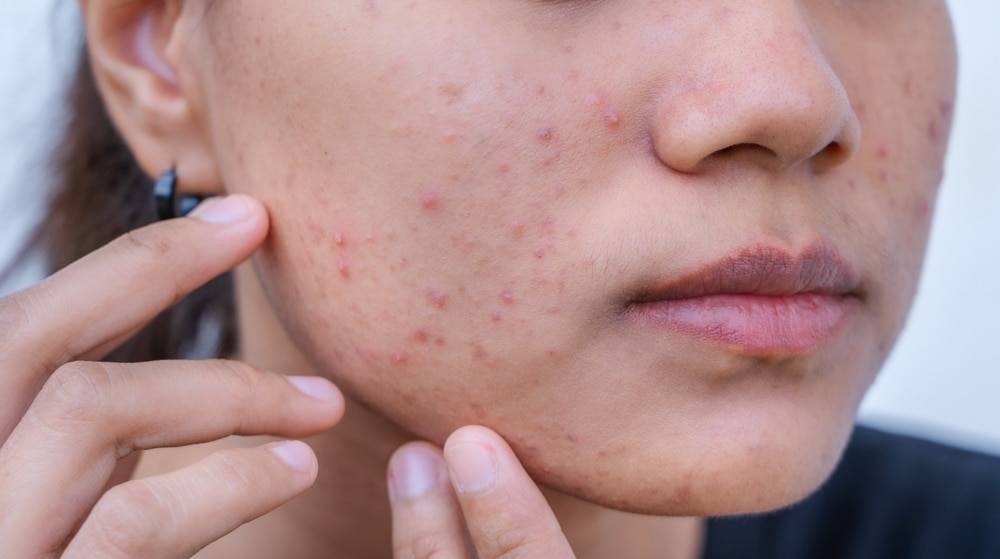Acne breakouts on different parts of the face can be more than just a skin issue; they may reflect deeper health concerns.
This guide explores how the location of acne can offer insights into your body’s internal health, suggesting targeted approaches for skincare and overall well-being.
Traditional Insights and Modern Research on Acne Breakouts
The concept of facial acne correlating with internal health issues dates back to ancient Ayurvedic and Chinese medicinal practices. These traditions propose a connection between specific facial areas and internal organs. For example, acne on the forehead is thought to reflect digestive system imbalances, while breakouts on the cheeks may indicate respiratory system concerns.
Contemporary Scientific Understanding
Contemporary research into acne goes beyond traditional mapping, focusing on diet, hormonal imbalances, and environmental factors. Studies considers genetics, hormones, and lifestyle as key contributors to acne. It emphasises the complexity of acne’s causes, including demographic influences like age and sex, and lifestyle factors such as computer use and work environment. This holistic approach recognises the interaction between external skin conditions and internal health factors, suggesting a comprehensive strategy for acne management that incorporates dietary adjustments and lifestyle changes.
Forehead Acne: Digestive and Lifestyle Influences
Forehead acne, a common dermatological concern, often signals deeper issues related to lifestyle and dietary habits. This type of acne is not merely superficial but can be indicative of underlying factors such as high glycaemic food intake, stress, and inadequate hydration, each playing a pivotal role in its exacerbation. Studies suggest a direct correlation between diet and skin health, highlighting how foods high on the glycaemic index can trigger insulin spikes, leading to increased sebum production and inflammation, thus worsening acne.
Furthermore, stress and sleep quality are also significant contributors, with elevated stress levels increasing cortisol production and poor sleep patterns affecting the skin’s repair mechanisms. Addressing these root causes through a balanced diet, sufficient hydration, stress management, and improving sleep quality can offer a holistic approach to managing forehead acne, targeting not only the symptoms but also the underlying issues contributing to skin breakouts.
Cheek Acne: A Multidimensional Approach for Effective Management
Cheek acne is more than a superficial skin concern; it signifies a complex interplay between environmental exposures, personal habits, and possibly underlying health conditions. This condition necessitates a comprehensive strategy that encompasses cleanliness, skincare hygiene, and attention to internal health imbalances.
The External Culprits: Contact and Contamination
Research highlights the role of direct contact with bacteria-infested objects, such as mobile phones and pillowcases, in exacerbating cheek acne. These items harbour bacteria, contributing to the proliferation of acne-causing microbes on the skin. High bacterial loads on mobile phones and other frequently touched objects correlate with an increased incidence of facial acne.
Moreover, the use of contaminated makeup tools is another significant risk factor. Makeup brushes and sponges can accumulate bacteria, dead skin cells, and oil, leading to clogged pores and breakouts if not regularly cleaned. Improper hygiene practices related to makeup application can substantially worsen skin conditions, including acne.
Chin and Jawline Acne: Hormonal Links
Chin and jawline acne is closely tied to hormonal fluctuations, particularly in women. This area often sees breakouts related to menstrual cycles, pregnancy, or polycystic ovary syndrome (PCOS). Hormonal shifts can increase sebum production, leading to clogged pores and acne.
Genetics play a significant role in acne development, influencing sebaceous gland activity and inflammation. Stress increases cortisol and androgen hormones, exacerbating acne symptoms. Treatments include a multimodal approach with retinoids, antibiotics, and hormonal treatments like birth control and spironolactone, targeting bacteria, reducing inflammation, and regulating oil production.
Managing hormonal acne may involve lifestyle adjustments, dietary changes, and sometimes, medical treatments like hormonal therapy under professional guidance.
Treating Acne Breakouts
Acne treatment varies widely depending on the severity and type of acne. Mild to moderate acne typically responds well to topical treatments, such as retinoids and benzoyl peroxide, which help reduce inflammation and clear clogged pores.
For more severe cases, oral medications, including antibiotics to reduce bacteria and inflammation, or isotretinoin for deep cystic acne, may be necessary. Additionally, hormonal treatments can be effective for women whose acne is influenced by hormonal fluctuations. Dermatologists also sometimes recommend procedures like chemical peels, laser therapy, or photodynamic therapy to manage acne and its scars. Each treatment plan is tailored to the individual’s specific needs, taking into account the type of acne, its severity, and the patient’s skin type.
Towards Clearer Skin: A Comprehensive Approach
Addressing acne, especially in hormone-sensitive areas like the chin and jawline, necessitates a multifaceted strategy. Incorporating dietary adjustments, stress management, and appropriate medical interventions can significantly mitigate breakouts. Consulting with dermatologists for personalised treatment plans, grounded in the latest scientific research, ensures the most effective management of acne.
References
- Yang, J., Yang, H., Xu, A., & He, L. (2020, September 17). A Review of Advancement on Influencing Factors of Acne: An Emphasis on Environment Characteristics. Frontiers in Public Health. https://doi.org/10.3389/fpubh.2020.00450
- Heng, A. H. S., & Chew, F. T. (2020, April 1). Systematic review of the epidemiology of acne vulgaris. Scientific Reports. https://doi.org/10.1038/s41598-020-62715-3
- Smith, R., Braue, A., Varigos, G., & Mann, N. (2008, April 1). The effect of a low glycemic load diet on acne vulgaris and the fatty acid composition of skin surface triglycerides. Journal of Dermatological Science. https://doi.org/10.1016/j.jdermsci.2007.11.005
- Singh, M., Pawar, M., Maheswari, A., Bothra, A., & Khunger, N. (2020, August 4). ‘Cell‐phone acne’ epidemic during the COVID‐19 pandemic. Clinical and Experimental Dermatology, 45(7), 903–905. https://doi.org/10.1111/ced.14360
Suh, D., Oh, H. I., Lee, S. J., Kim, H. J., & Ryu, H. J. (2020, November 30). Relationship between acne and the use of cosmetics: Results of a questionnaire study in 539 Korean individuals. Journal of Cosmetic Dermatology. https://doi.org/10.1111/jocd.13853

